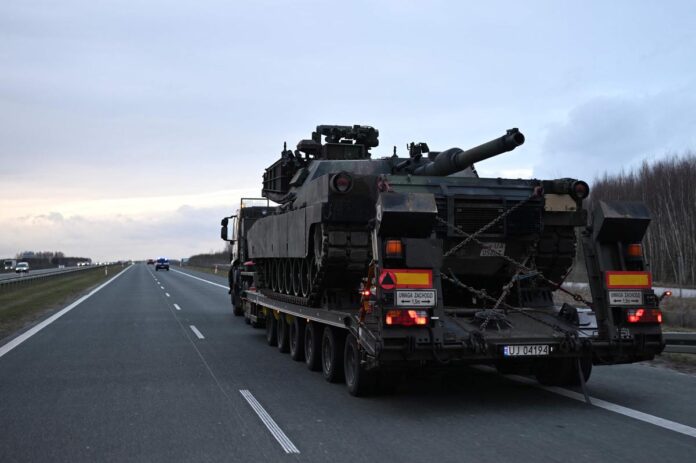As the sun rose over the Baltic Sea, the sound of roaring engines and the sight of military vessels cutting through the water filled the air. The Lithuanian army was in action, executing maneuvers as part of operation ‘Steadfast Defender 24’. Under the watchful eye of Defence Minister Laurinas Kasciunas, the troops were engaged in a series of exercises aimed at enhancing their readiness and interoperability with NATO allies.
“This is an important deterrent exercise,” Minister Kasciunas stated, emphasizing the significance of the operation in the current geopolitical climate.
Soon Lithuania is likely to face elections for its presidential candidate. The president’s main tasks in Lithuania’s political system are overseeing foreign and security policy, and acting as the supreme commander of the armed forces. Those duties and the nation’s strategic location along NATO’s eastern flank amid a larger geopolitical standoff between Russia and the West add heft to the role despite Lithuania’s relatively small size.
What is Steadfast Defender 24?
‘Steadfast Defender 24’ is a large-scale military exercise conducted by NATO. It is designed to test and enhance the alliance’s collective defense capabilities. The number “24” in the exercise’s name signifies the year it is conducted, in this case, 2024.
The primary goal of ‘Steadfast Defender 24’ is to demonstrate NATO’s readiness and ability to respond to various security challenges, including conventional and hybrid warfare threats.
You may like to Check the NATO website for the broader understanding of concept.
The exercise involves the participation of military forces from multiple NATO member states and often includes land, sea, and air components.
You may also like to read
Estonia’s Bold Moves: Cuts Education Ties with Russia, Considers Armed Support to Ukraine
Defending Democracy: Czech Republic’s Bold Stand Against Russian Election Meddling
South Korea’s Sanctions Against Russia: A Bold Step Against North Korea
By conducting such exercises, NATO aims to strengthen cohesion among member states, improve interoperability between their armed forces, and deter potential adversaries. ‘Steadfast Defender 24’ is particularly significant as it is considered NATO’s largest military exercise since the Cold War, underscoring the alliance’s commitment to collective defense and security in the Euro-Atlantic area.
Story so far
The North Atlantic Treaty Council (NATO) started its largest military exercise in Europe — the Steadfast Defender 2024 — at the end of January, which is being seen as a statement of solidarity against Russia, after two years of its invasion of Ukraine. The exercise is being conducted in two parts — the first phase began January end and will last till mid-March and focus on maritime reinforcement across the Atlantic and in the Arctic. The second phase (mid-February to end of May) will focus on using deployed reinforcements across all domains, from the Arctic to the Eastern Flank.
As the Lithuanian army conducted its maneuvers, NATO forces from various member states joined in, showcasing their capabilities and coordination in a simulated combat environment. The exercise simulated various scenarios, including amphibious landings, air defense operations, and rapid response to potential threats.
For the soldiers participating, it was more than just a training exercise; it was a demonstration of their commitment to protecting their homeland and supporting their allies. As the operation continued, the message was clear: NATO is ready and steadfast in its defense of member states, ensuring the security and stability of the region.


